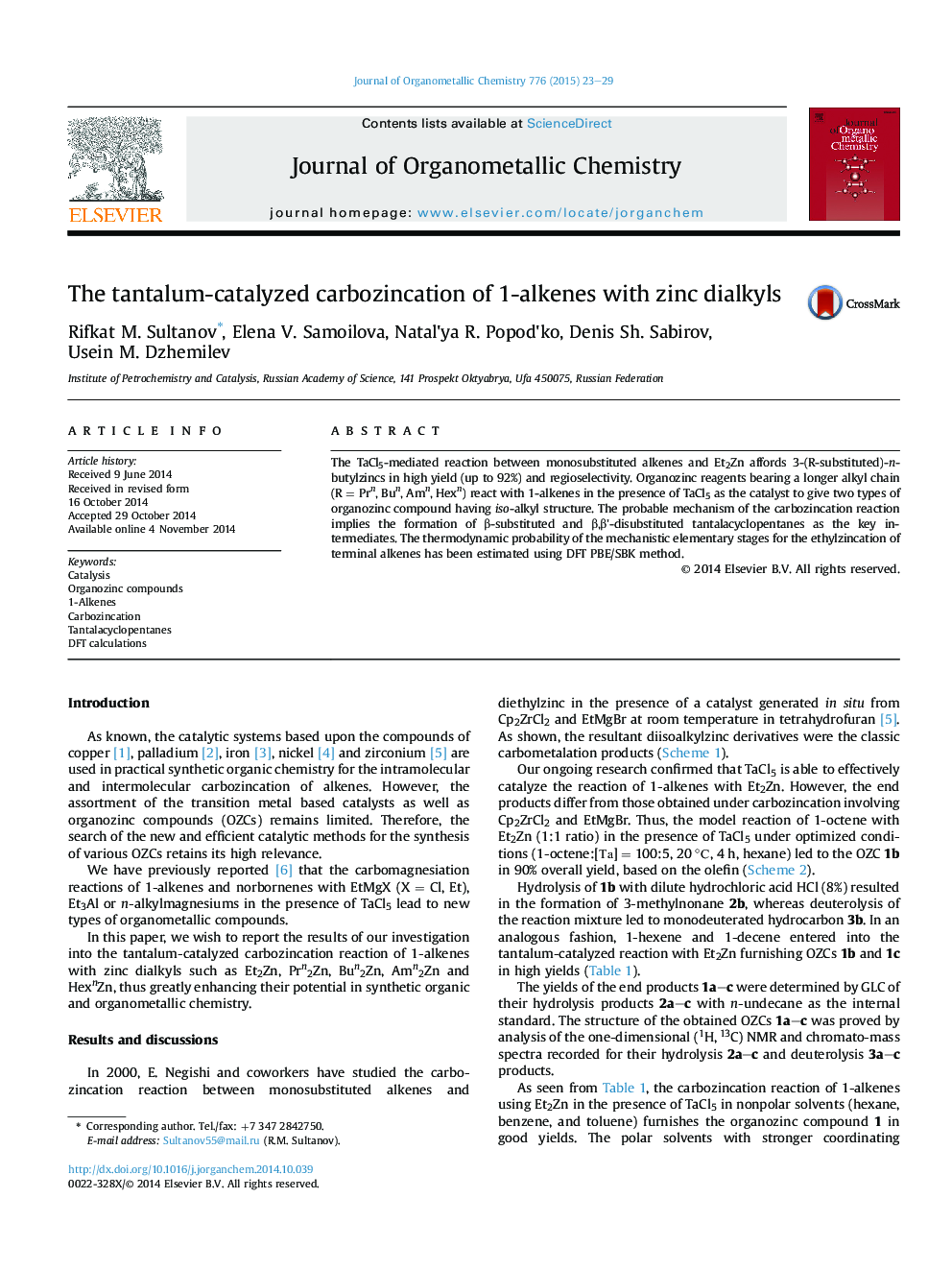| Article ID | Journal | Published Year | Pages | File Type |
|---|---|---|---|---|
| 1322160 | Journal of Organometallic Chemistry | 2015 | 7 Pages |
•TaCl5 regioselectively catalyzes the reaction of 1-alkenes with Et2Zn.•The ethylzincation reaction produces 3-(R-substituted)-n-butylzincs in high yield.•DFT study confirms thermodynamic stability of the sole ethylzincation product.•1-Alkenes react with Zn n-dialkyls giving two types of organozincs.•The β- and β,β′-substituted tantalacyclopentanes are proposed as key intermediates.
The TaCl5-mediated reaction between monosubstituted alkenes and Et2Zn affords 3-(R-substituted)-n-butylzincs in high yield (up to 92%) and regioselectivity. Organozinc reagents bearing a longer alkyl chain (R = Prn, Bun, Amn, Hexn) react with 1-alkenes in the presence of TaCl5 as the catalyst to give two types of organozinc compound having iso-alkyl structure. The probable mechanism of the carbozincation reaction implies the formation of β-substituted and β,β'-disubstituted tantalacyclopentanes as the key intermediates. The thermodynamic probability of the mechanistic elementary stages for the ethylzincation of terminal alkenes has been estimated using DFT PBE/SBK method.
Graphical abstractThe TaCl5-catalyzed carbozincation of 1-alkenes with Et2Zn affords 3-(R-substituted)-n-butylzincs. The reaction with Zn n-dialkyls furnished two types of organozinc compounds having iso-alkyl structure. Thermodynamic probability of elementary stages of the proposed mechanism implying formation of the key β- and β,β′-substituted tantalacyclopentanes agrees well with the experimental data.Figure optionsDownload full-size imageDownload as PowerPoint slide
